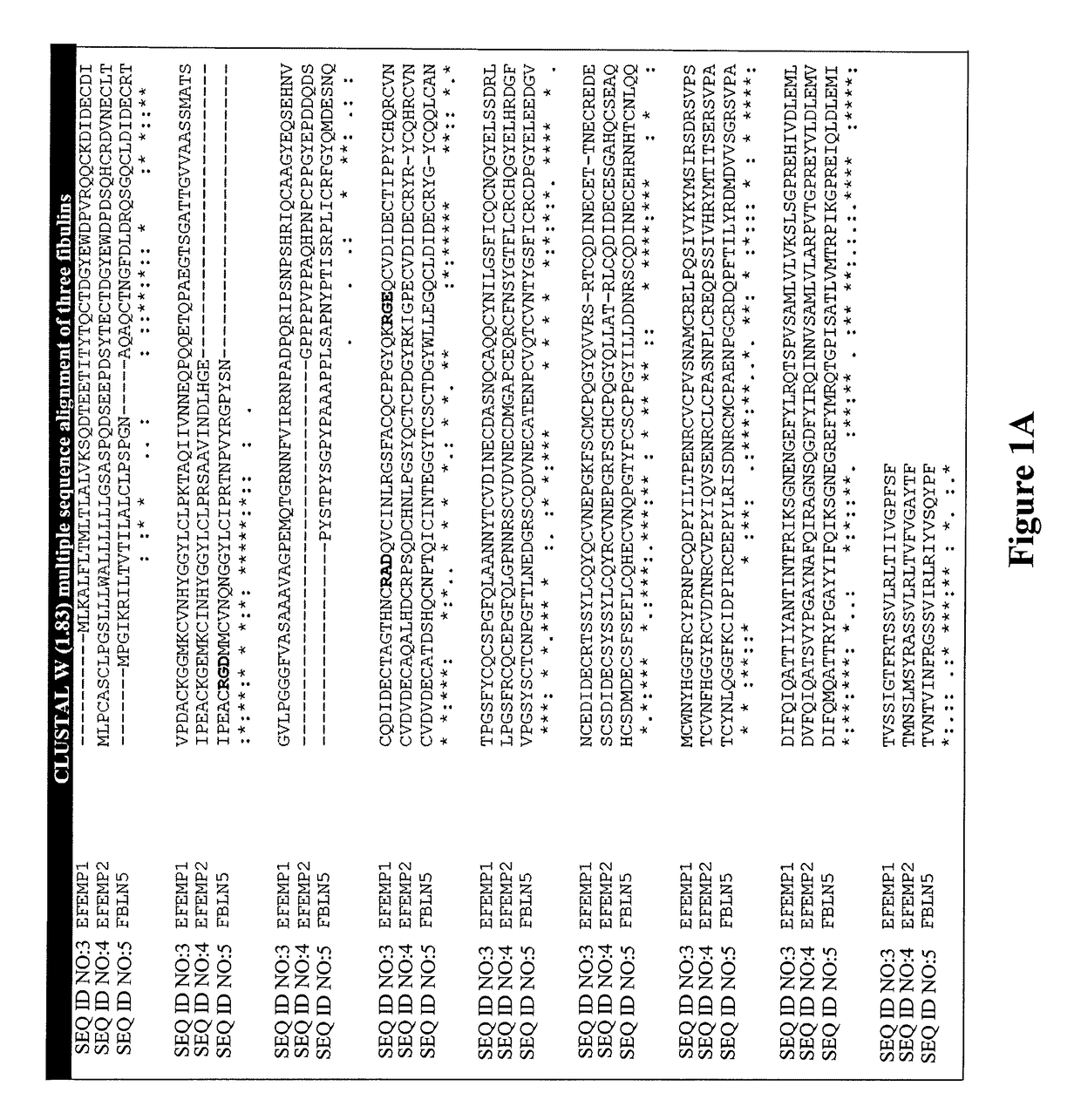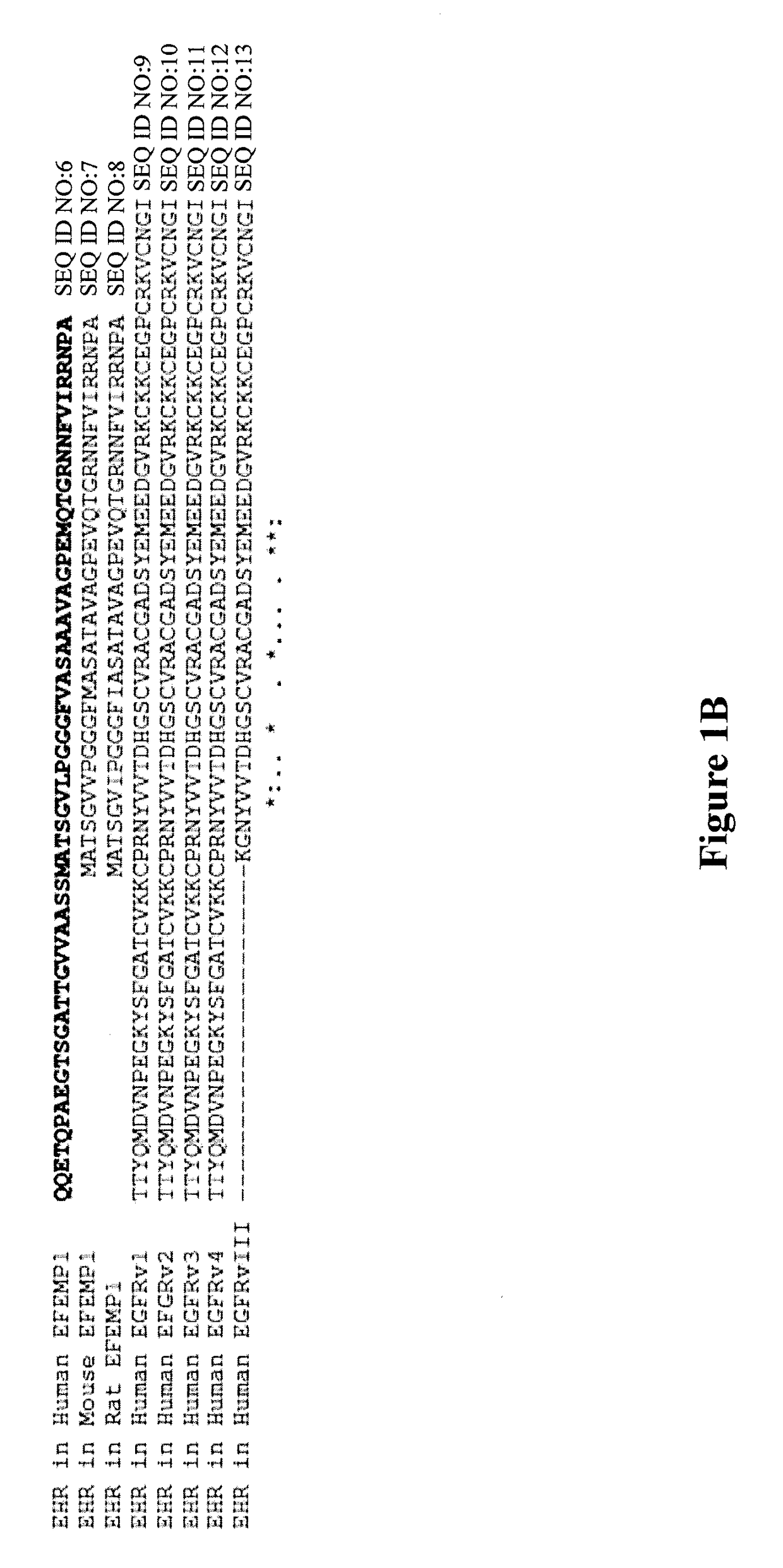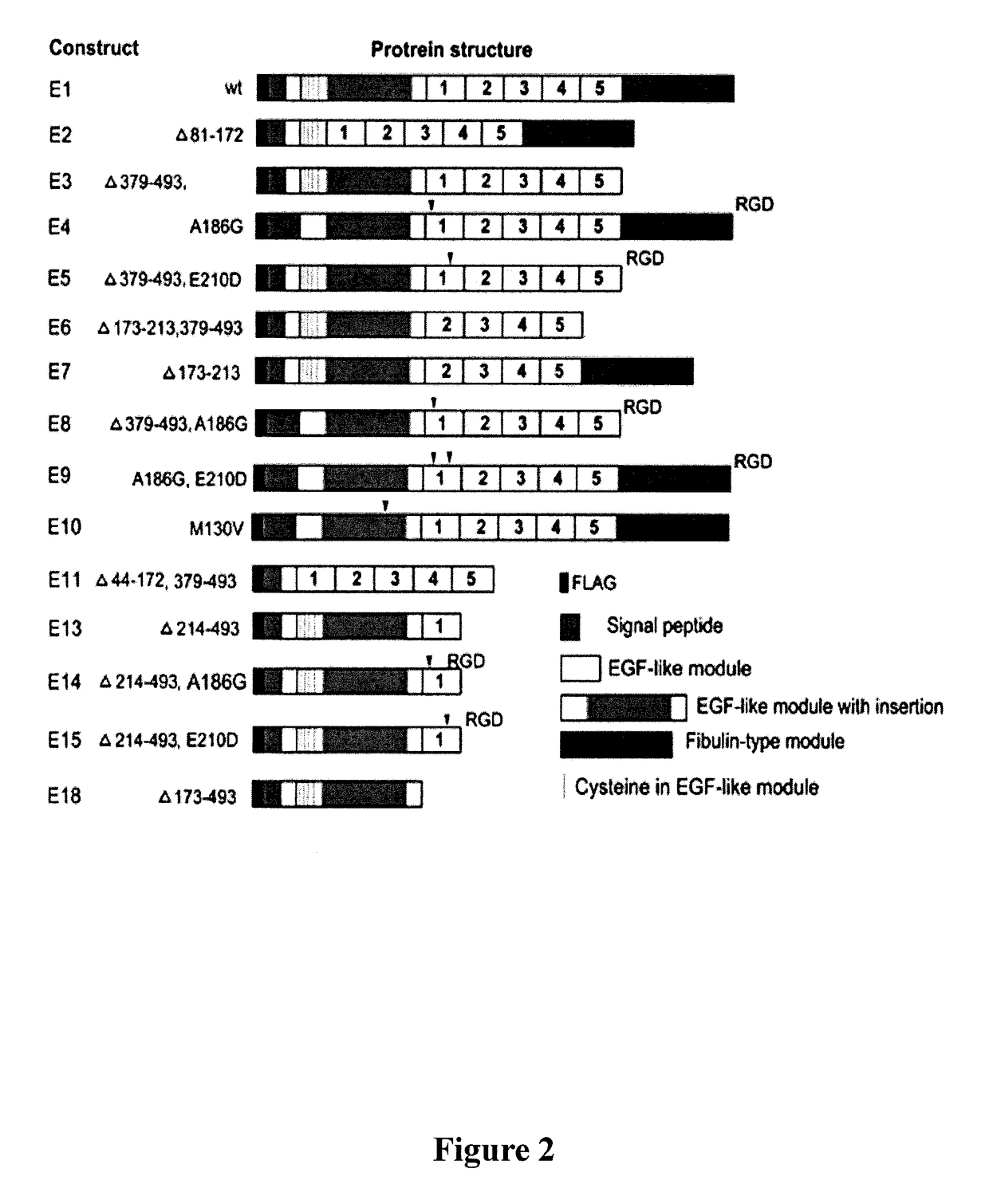Fibulin protein variants and corresponding nucleic acid sequences
a technology of fibulin and protein variants, which is applied in the field of fibulin protein variants and corresponding nucleic acid sequences, can solve the problems of correlated efemp1 over-expression, poor prognosis of cervical cancer, and correlation of elevated efemp1 expression
- Summary
- Abstract
- Description
- Claims
- Application Information
AI Technical Summary
Benefits of technology
Problems solved by technology
Method used
Image
Examples
example 1
[0048]EFEMP1 Deletion / Mutation Constructs.
[0049]Expression constructs encoding the E1, E2, E3, E4, E5, E6, E7, E8, E9, E10, E11, E13, E15, and E18 wild-type and variant EFEMP1 proteins illustrated in FIG. 2 and described above were made by PCR, with primers designed to create restriction sites for cloning and / or ligation of two separate cDNA fragments of EFEMP1. PCR products were cloned into TA-cloning vector pCR4.0 and sequence verified, prior to subcloning into mammalian expression vector pcDNA3.1+ (Life Technologies) and lentiviral vector pTRIPZ. A shuttle vector had been made to introduce internal ribosome entry site for expression of EFEMP1 wild-type and variant proteins in pTRIPZ (Thermo Scientific) under the same promoter for red fluorescent protein (RFP).
example 2
[0050]U251 Lentiviral Infectants.
[0051]U251 (parental and neural sphere cultures) lentiviral infectants were established by generating lentivirus from co-transfecting HEK293 with plasmid DNA constructs (lentiviral vector pTRIPZ-empty vector or pTRIPZ-EFEMP1 construct E1, E2, E3, E4, E5, E6, E7, E8, E9, E10, E11, E13, E15, and E18 together with its derived constructs, psAX2, and pCMV-VSV-G). The U251 lentiviral infectants were established after elimination of uninfected cells by a 1-2 week culture under selecting antibiotic (1.25 μg / ml puromycin) and addition of doxycycline (1 μg / ml) to monitor success of infection via RFP expression in live cells with inverted fluorescent microscopy.
[0052]U251 Stable Transfectants.
[0053]U251 stable transfectants were established by transfecting with with plasmid DNA constructs (pcDNA3.1 vector or pcDNA-E1, E2, E3, E4, E5, E6, E7, E8, E9, E10, E11, E13, and E15), and cultured under selecting antibiotic (400 μg / ml neomycin) to form colonies. Individua...
example 3
[0054]Soft Agar Colony Formation Assay.
[0055]800-1000 cells were mixed with 1 ml of 0.3% soft agar in DMEM / F12 supplemented with 5% bovine serum or a mitogen supplement for NS cultures described in Example 10, spread onto hardened 0.5% soft agar in the same medium (1 ml per well in four corner wells of a 6-well plate). 1 ml of the same medium was added 2 and 3 weeks later and colony numbers were counted 4 weeks later under a microscope with a 4× lens. The cells were U251 control cells and U251 cells stably transfected with constructs E1, E2, E3, E4, E5, E6, E7, E8, E9, E10, E11, E13, E14, E15, or pcDNA-empty vector (Vec). The cells were cultured in medium containing doxycycline to induce transgene expression. Total number of colonies in each well were counted under microscope with 4× lens and normalized to average number of colony from Vec control (set in uninity). The average (Ave) and standard deviation (SD) were based on colonies formed 4 individual wells. 5-10 Representative col...
PUM
| Property | Measurement | Unit |
|---|---|---|
| concentration | aaaaa | aaaaa |
| pH | aaaaa | aaaaa |
| nucleic acid | aaaaa | aaaaa |
Abstract
Description
Claims
Application Information
 Login to View More
Login to View More - R&D
- Intellectual Property
- Life Sciences
- Materials
- Tech Scout
- Unparalleled Data Quality
- Higher Quality Content
- 60% Fewer Hallucinations
Browse by: Latest US Patents, China's latest patents, Technical Efficacy Thesaurus, Application Domain, Technology Topic, Popular Technical Reports.
© 2025 PatSnap. All rights reserved.Legal|Privacy policy|Modern Slavery Act Transparency Statement|Sitemap|About US| Contact US: help@patsnap.com



